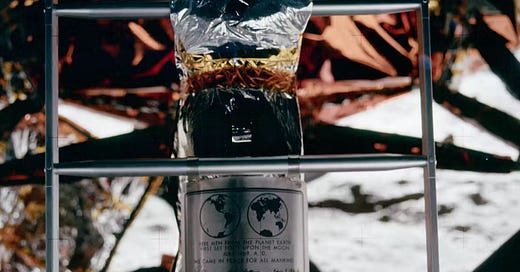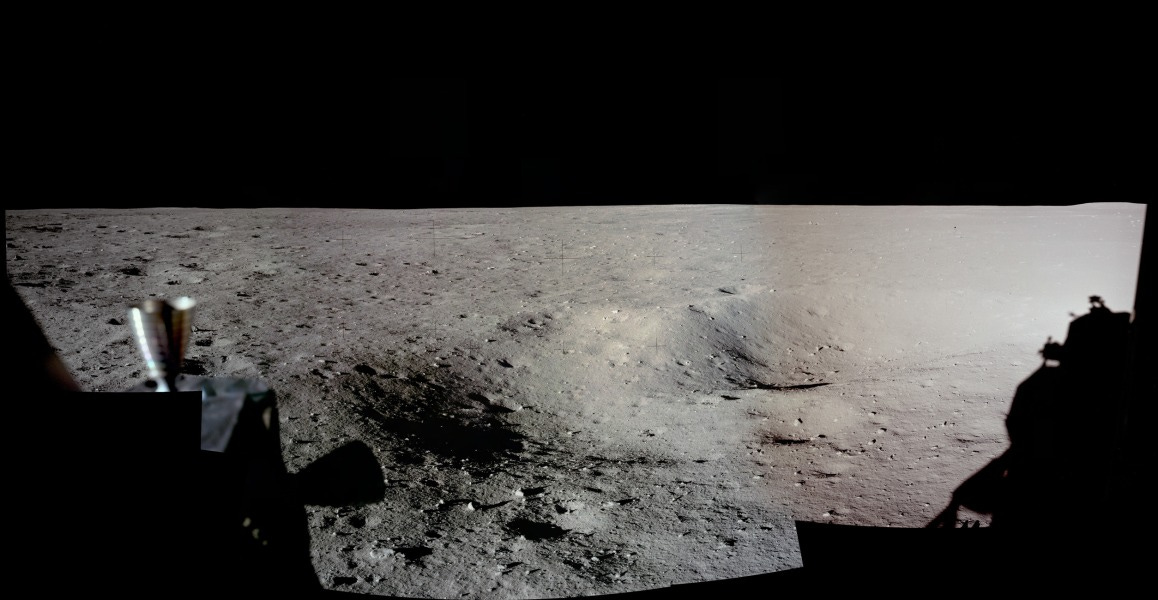Heritage Sites: Protecting the Lunar Legacy
What kind of space laws protect heritage sites in space?
When Artemis astronauts land on the moon, the old site for Apollo 11 won’t be disturbed.
Over 50 years ago, NASA astronauts landed on the moon for the first time. The astronauts left behind the lunar landing module, an American flag, many hardware components, and other commemorative objects.
Decades later, lawmakers and policymakers have been pushing to designate the Apollo 11 site as a heritage site.
Why?
Additional landings nearby could uncontrollably spew damaging regolith on the site, and could otherwise erase the history left behind by these astronauts!
To protect against this, NASA has created “buffer zone” guidelines aimed at preventing future human interference with the site, especially to preserve man’s first ever steps on another celestial body.
Enforced by the "One Small Step to Protect Human Heritage in Space Act” passed at the end of 2020, these buffer zones require that U.S. commercial enterprises and others seeking contracts, grants or other agreements for lunar activities carried out by, for, or in partnership with NASA agree to stay clear of the human heritage sites on the moon to be eligible for the requested support.
In fact, it is expected that there will be an exclusion zone for Apollo 11’s site, which will result in a keep-out zone of 75 meters from the lunar module descent stage, where as the zone will extend 200-225 meters from the site of the last mission to the moon, Apollo 17. For the Apollo 12, 14, 15 and 16 sites, it is expected that more access will be provided to individual components and artifacts allowing for future robotic missions to get within touching distance of Apollo hardware – as much as they won’t be allowed physical contact.
In the future, I wouldn’t be surprised if more frameworks for space heritage and space archaeology become legally binding as we continue to explore the Solar System, reaching past the moon to visit Mars and beyond.
Takeaways and Resources 🚀
Takeaways
Greater focus on space law: In the coming years, as we begin to land on the Moon and Mars, there will be a greater emphasis on protecting sites with immense cultural and scientific heritage, including the Apollo 11 landing site and the Artemis 3 landing site, just to name a few. I would certainly expect therefore a boom in space law job openings!
2 Resources
Overview of space heritage laws: https://www.nasaspaceflight.com/2011/09/protecting-apollo-sites-future-visiting-vehicles-nasa-evaluation/
Protecting heritage sites: http://www.collectspace.com/news/news-010121a-one-small-step-space-heritage-act.html
NASA Photo of the Day 🌔
Have you seen a panorama from another world lately? Assembled from high-resolution scans of the original film frames, this one sweeps across the magnificent desolation of the Apollo 11 landing site on the Moon's Sea of Tranquility. The images were taken 55 years ago by Neil Armstrong looking out his window on the Eagle Lunar Module shortly after the July 20, 1969 landing. The frame at the far left (AS11-37-5449) is the first picture taken by a person on another world. Thruster nozzles can be seen in the foreground on the left (toward the south), while at the right (west), the shadow of the Eagle is visible. For scale, the large, shallow crater on the right has a diameter of about 12 meters. Frames taken from the Lunar Module windows about an hour and a half after landing, before walking on the lunar surface, were intended to document the landing site in case an early departure was necessary.
Authors & editors: Robert Nemiroff (MTU) & Jerry Bonnell (UMCP)
Daily Opportunity Drop 🌌
Pretty relevant to today’s discussion, check out this job posting for a role at Blue Origin, where you can work as a Sr Radiation Specialist Engineer Specialty Sciences - Lunar Permanence: https://blueorigin.wd5.myworkdayjobs.com/en-US/BlueOrigin/job/Sr-Radiation-Specialist-Engineer-Specialty-Sciences---Lunar-Permanence_R46513?utm_campaign=google_jobs_apply&utm_source=google_jobs_apply&utm_medium=organic





